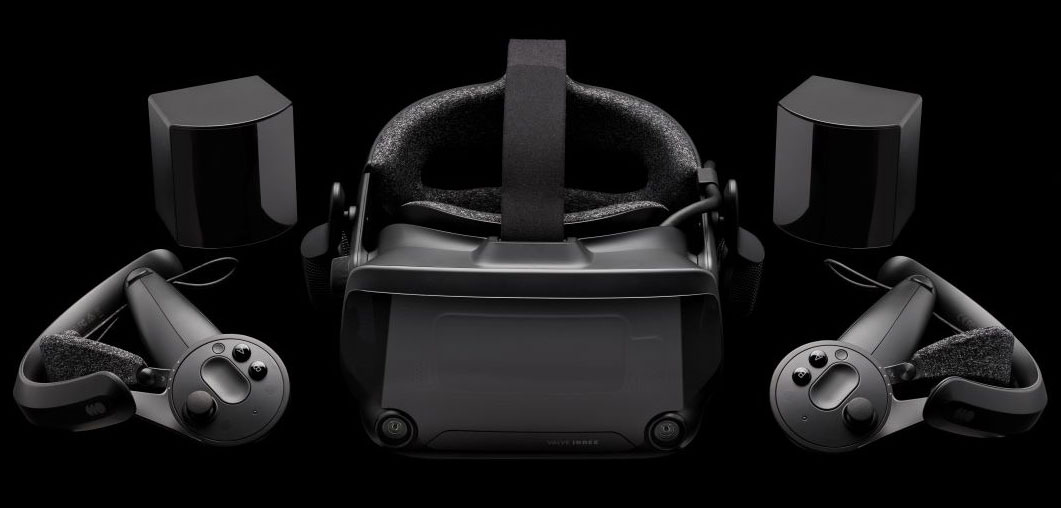Suffering so you don't have to, this streamer has doubled up on haptic suits to feel the real pain of Skyrim VR
I'm so bad at VR games that I'd be permanently on the floor, whimpering like a scared puppy.

Having already spent over $15,000 on building the ultimate VR gaming set-up, one streamer has decided that the level of haptic feedback it offered simply wasn't immersive enough. Cue an additional vest that replicates health damage in the form of electric shocks to the skin, to make sword hits, magic blasts, and dragon fire really sting.
The streamer in question goes by the name GingasVR (via GamesRadar) and their TikTok channel is full of Skyrim and Fallout VR clips, showing just what can be achieved through the use of mods and a lot of imaginative tweaking and engineering. For example, to simulate in-game weather, GingasVR uses a bunch of floor-standing fans that get activated when the wind blows. A vibrating vest provides further immersion by simulating weapon hits or even the feeling of food being swallowed when eating.
But's nothing compared to the streamer's solution for the ultimate in VR gaming—an additional feedback bodysuit that provides an electric shock to the skin, when the game's character takes damage. GingasVR provided a demonstration of it in Skyrim VR and I have to say that it looks brilliant and awful, in equal measure.
Wearing 2 haptic feedback suits in Skyrim while talking to an OpenAi NPC and simulating temperature with smart plugs 🫡 #vr #skyrim #tech #gaming pic.twitter.com/3vDB17FM4cApril 25, 2024
I've tried a feedback vest in the past, one that simply thumped against your chest and back when incoming weapons and projectiles made contact with you, and it was quite the experience. Well, I say experience but what I really mean was bloody painful, especially when really cranked up. Yeah yeah, I know—I'm feeble.
But what GingasVR puts themself through with this electroshock vest is on another level entirely, although it's not quite as horrifying as listening to a chatbot-voiced NPC agreeing that they should jump off a bridge to get the best experience. Death by dragon fire looks genuinely painful.
Do we need to be actually hurt, in real life, to make a game more immersive? I honestly don't know for sure, but I'd be the first to try it out. Imagine playing a combat VR game with swords or lightsabers, and feeling every stab or slice across your arms or chest.
Picture a horror game that uses randomised pulses of light shocks to make you feel on edge all the time. Or how about a climbing game when, if you fall, the system alters the emergency services, because you've been given a jolt of current strong enough to paralyse you?
The biggest gaming news, reviews and hardware deals
Keep up to date with the most important stories and the best deals, as picked by the PC Gamer team.

Best VR headset: which kit should you choose?
Best graphics card: you need serious GPU power for VR
Best gaming laptop: don't get tied to your desktop in VR
Leaving the debate on the ethics of games mentally scarring you for life for another time, I'm genuinely impressed by the level of commitment that GingasVR has for their modding and tinkering. Sure, it's a massive chunk of money to be spending on something like this, but progress isn't made by just sitting around and wishing for these things.
Rumble packs and force feedback triggers are so last century. If any company wants to get into VR accessories, then forget treadmills and stuff—anxiety-inducing electro-suits are where it's at now

Nick, gaming, and computers all first met in 1981, with the love affair starting on a Sinclair ZX81 in kit form and a book on ZX Basic. He ended up becoming a physics and IT teacher, but by the late 1990s decided it was time to cut his teeth writing for a long defunct UK tech site. He went on to do the same at Madonion, helping to write the help files for 3DMark and PCMark. After a short stint working at Beyond3D.com, Nick joined Futuremark (MadOnion rebranded) full-time, as editor-in-chief for its gaming and hardware section, YouGamers. After the site shutdown, he became an engineering and computing lecturer for many years, but missed the writing bug. Cue four years at TechSpot.com and over 100 long articles on anything and everything. He freely admits to being far too obsessed with GPUs and open world grindy RPGs, but who isn't these days?

